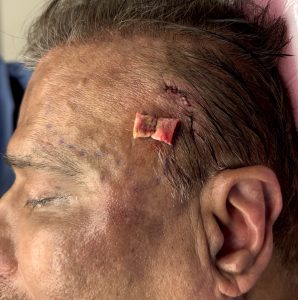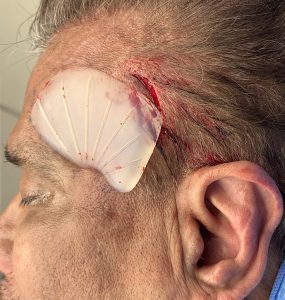Implants provide a permanent method for augmentation of temporal hollowing. Placed at the sub fascial level they create a muscle augmentation effect as an interpositional material between the muscle and the overlying fascia. As of today there are two styles of standard temporal implants. For hollowing that is limited to the lower half of the temporal area there is a style one design. When the temporal hollowing extends all the way up to the bony temporal line of the forehead there is an extended design known as style 2 which has a more vertical elongated implant footprint.
Regardless of the temporal implant style they are both placed through small incisions behind the temporal hairline. But despite the same incision location there are different considerations in their placement to get the correct orientation. In the style to extend it Templeton plant it’s Long height and relatively short with poses challenges for placement. Coming in from a side incision provided adequate suibfascialpocket dissection has been done the implant must pass through the incision and then turn 90° for proper implant orientation. Unless one is coming from a very high temporal hairline incision the style 2 temporal implant can not be placed like putting a pizza in the oven.


The over enlarged pocket from prior temporal implant malpositioning may be able to be reduced by the placement of internal sutures. But the size of the temporal incision is limited for much internal suturing particularly very far past the incision entrance. The bolster technique provides a greater ability to close down specific areas of the pocket. As long as the application of the bolster does not go much past the edge of the temporal hairline there is no risk of frontal branch facial nerve injury.
Dr. Barry Eppley
World-Renowned Plastic Surgeon




